Over the past two weeks the rose garden has begun erupting into bloom. Now in its second year of growth (third year in design build), things are starting to knit together. The herbaceous perennials that i’ve incorporated into the design as supporting acts for the roses are emerging into their first year of growth; alliums, geums, alchemilla mollis, red campion, cuckoo flower, geranium dusky crug. There are probably too many roses. Even in just its second year of growth, I can already see that i’ve over planted and some of them are taking up way more room than i had anticipated. Some of the central allium clumps are completely swamped by the roses, particularly with the roses that i’ve struggled to support and are now growing much more horizontally than intended. I think i perhaps could have cut the numbers by half, but what a challenge that would have been… i don’t think i could have hampered my desires for these particular plants in what has been my first large scale design project. Perhaps it’s a bit like how people describe an author’s debut novel, the writer gets a bit carried away and wants to put everything in it. The eternal struggle of the edit.
It’s so interesting how needed the herbaceous perennials are in design. Without them, the roses are all orgasms, just these big shouts of shape and colour that leave little room for a crescendo or a breath. They are the crashing symbol, the exploding rocket, and they need other plants to buffer how loud that can be in design. The alliums in particular have been a really important way of capturing rhythm in the scheme, using them repetitively across the design that allows them to ripple in consistency amongst the changing shapes and colours of the roses. I’m already finding myself taking some of it out. The pulmonaria i planted last year are the most intense shade of powder-paint blue, so striking in late winter and early spring. But they simply don’t fit in with the colours im working with; a bruising blush of burgundy, deep purples, reds, pinks, faun-browns, pale yellows and dusky, sunset oranges. I always imagine that those uninterested in a colour scheme or particular garden design must find the idea of something “not working” and needing to be removed so unbearably snobby. And it is a bit outrageous. That pulmonaria is objectively a beautiful plant, quite worthy of any place in the garden. But i need it to support – to sculpt – the space in ways that the blues, and then later after flowering, the plain and pointed green hairy leaves, simply don’t achieve. I want to add more of the burgundy chocolate of the geraniums dusky crug and pink spice, both of which make for fantastic foil against the brightness and focus of the roses. I’ve been trying to incorporate bronze fennel into the scheme too, although they often succumb to my limited capacity to maintain plants from seed. Seed sowing to this day remains some of my most difficult aspects of gardening whilst sick, never feeling like i’m able to meet the demands of this needy process. I’ve grown so many fennels from seed that have shriveled up in overwatered trays or rotten over winter sat in cramped pots when they should have been planted out. I try and let it go as part of crip-gardening, but it is a grief to not feel able to keep up with the intensity that is nurturing plants from seed… perhaps something i’ll write more about. All of this to say, the perennials are very much a work in progress, and hopefully this summer i can begin to adjust the balance in the design.
/// /// /// /// ///
Here is what the garden is looking like currently. I’m mainly sharing bigger shots of the plot here and just a couple of close ups of the roses, just to try and give a feel for the overall scheme and layout. I will share more specific roses in my next post where i want to explore the different textures and forms that each rose offers, not only in genus but in the duration of flowering.
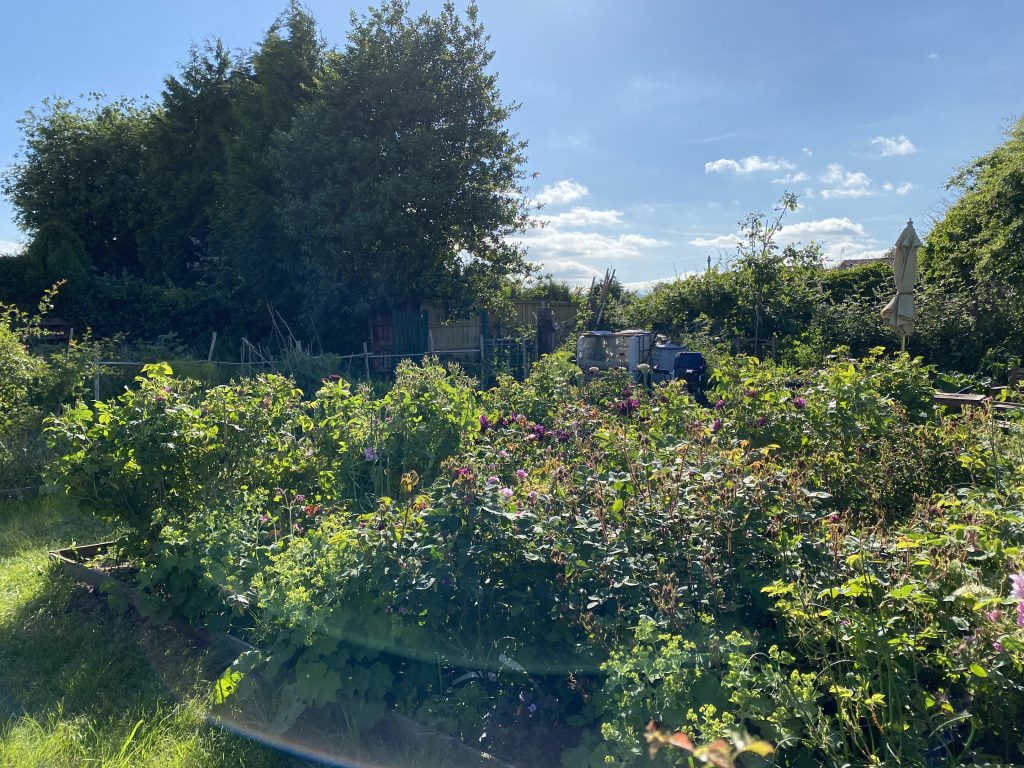
The garden erupting into bloom at the studio-allotment….
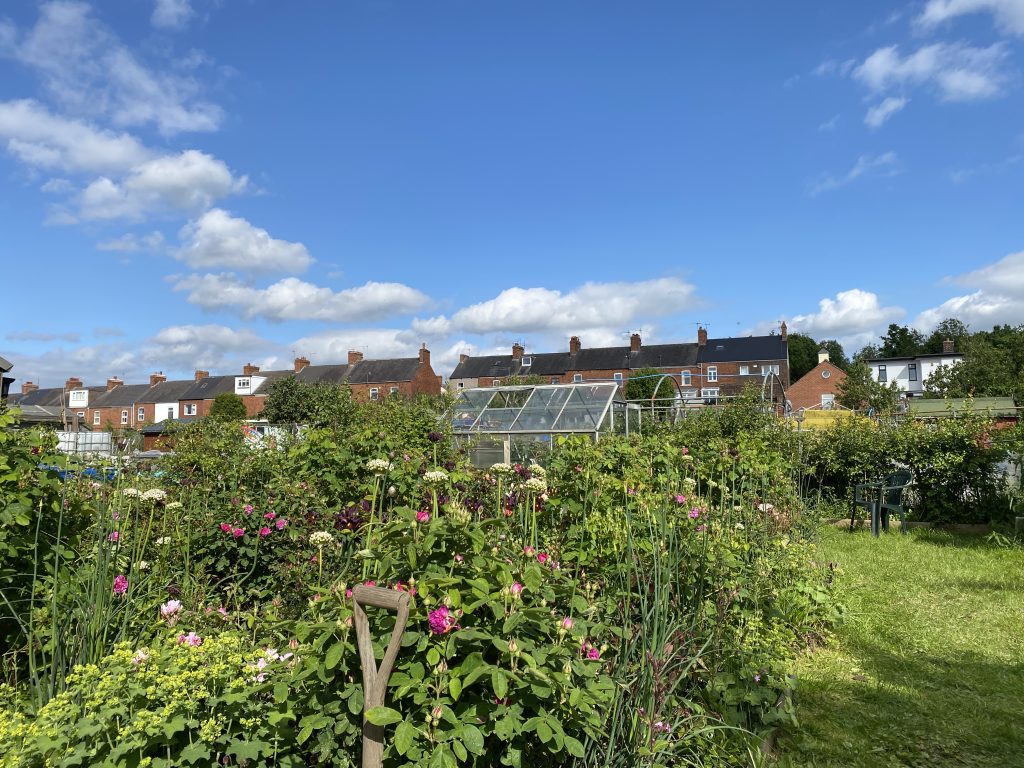
Here you can see planted amongst the roses the alliums on long thin stems with pom-pom like flowers on top coming into flower. Other herbaceous perennials like the green alchemilla mollis are also bursting into acid green bloom.
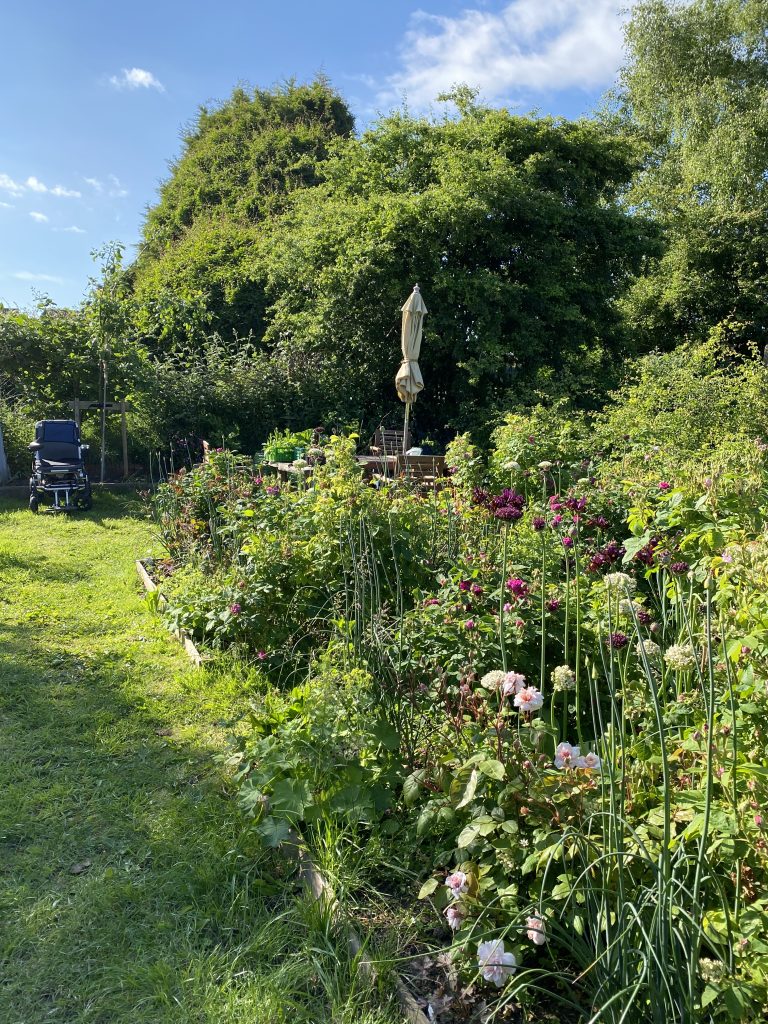
I love this image so much, i really think you can start to get a sense of the rhythm in the design that the alliums bring to the scheme. Here, the drumstick alliums – which are only just coming into bud and are yet to bloom – are placed in clumps at intervals all along the front face of the design. Its really lovely to see things intermingle with one another more, especially after the first year of the design last year which felt very stiff and static as i gave the roses space to breathe and grow – it really did feel like a 1960’s front garden with tea roses! I love capturing my wheelchair amongst the garden in photos like this as well; small portraits of myself beyond my body.
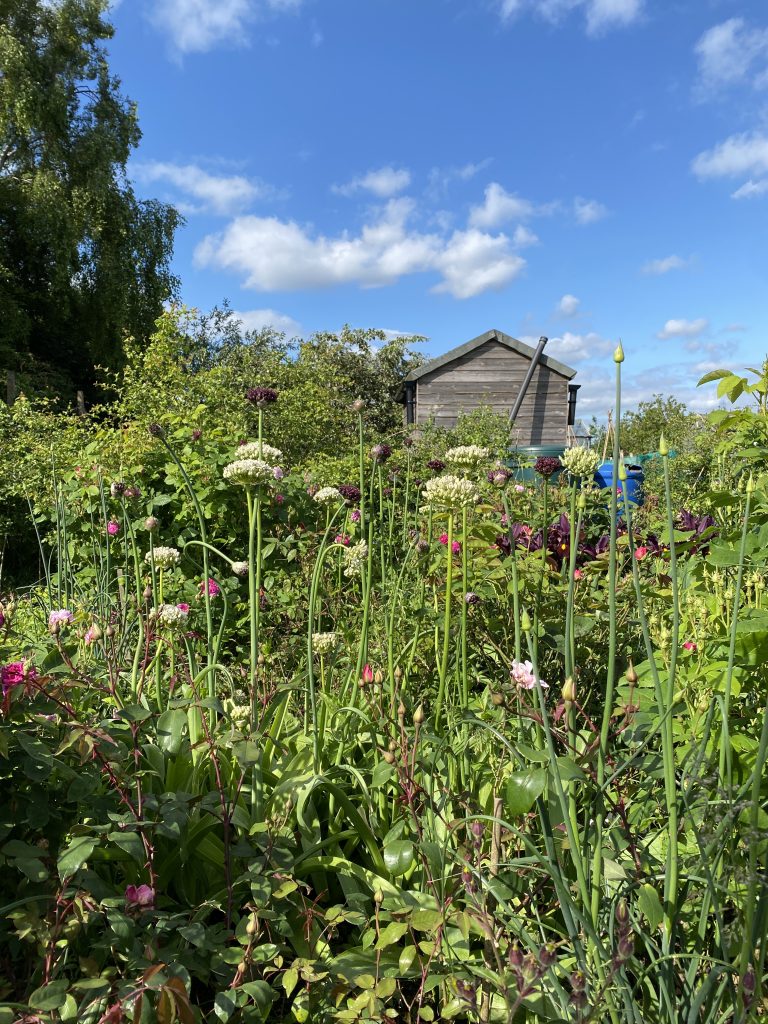
A closeup of one of the beds from the front (the garden design is essentially two large beds split down the middle).
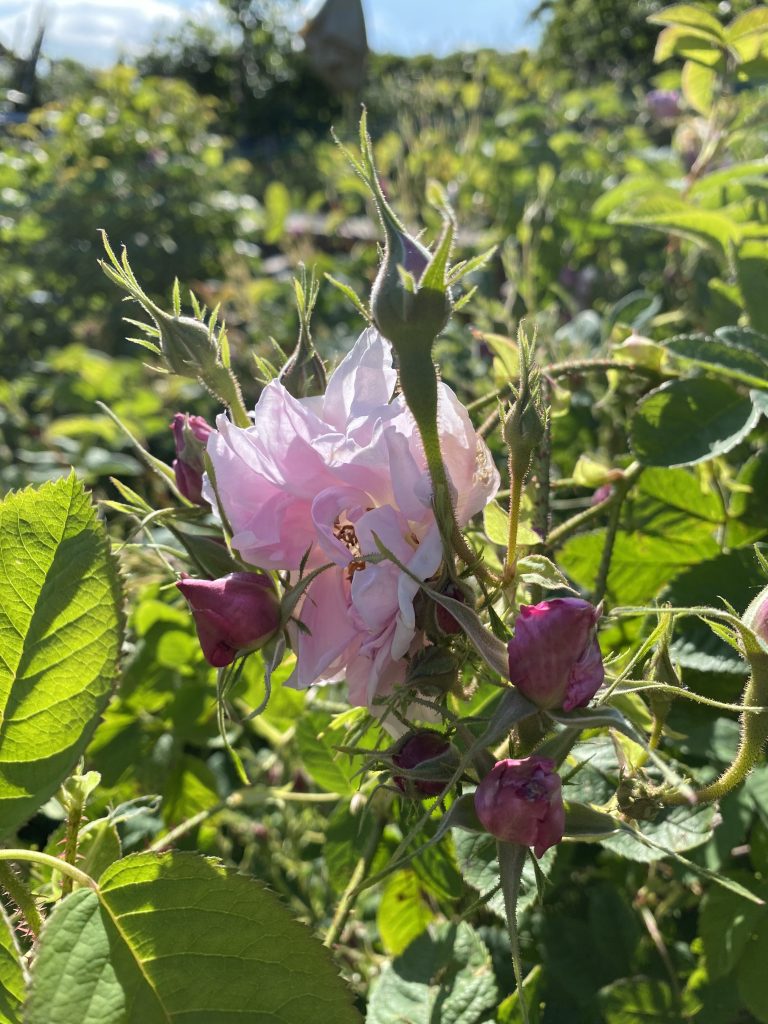
A close up of the Kazanlik rose. Kazanlik is a beautiful, once-flowering rose that is found growing in parts of eastern Europe where it is used to make rose oil. It has an incredible turkish delight scent, and I love that it only flowers once, one of the few roses in the design that does so with most of the others being repeats.
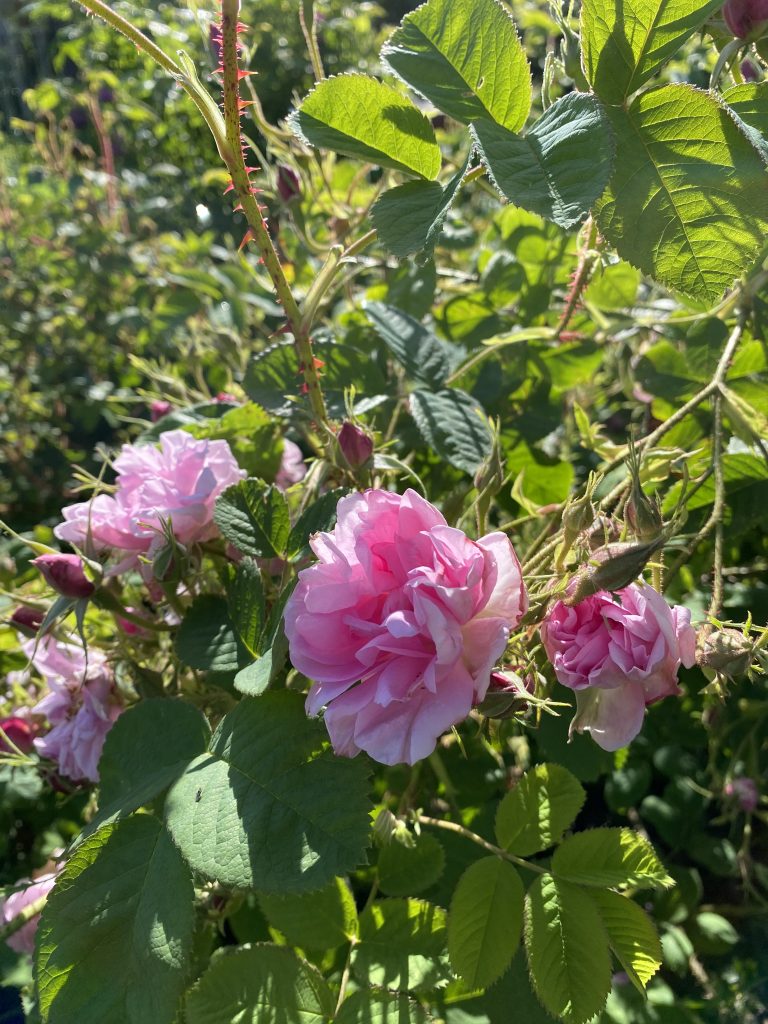
A close up of the Kazanlik rose.
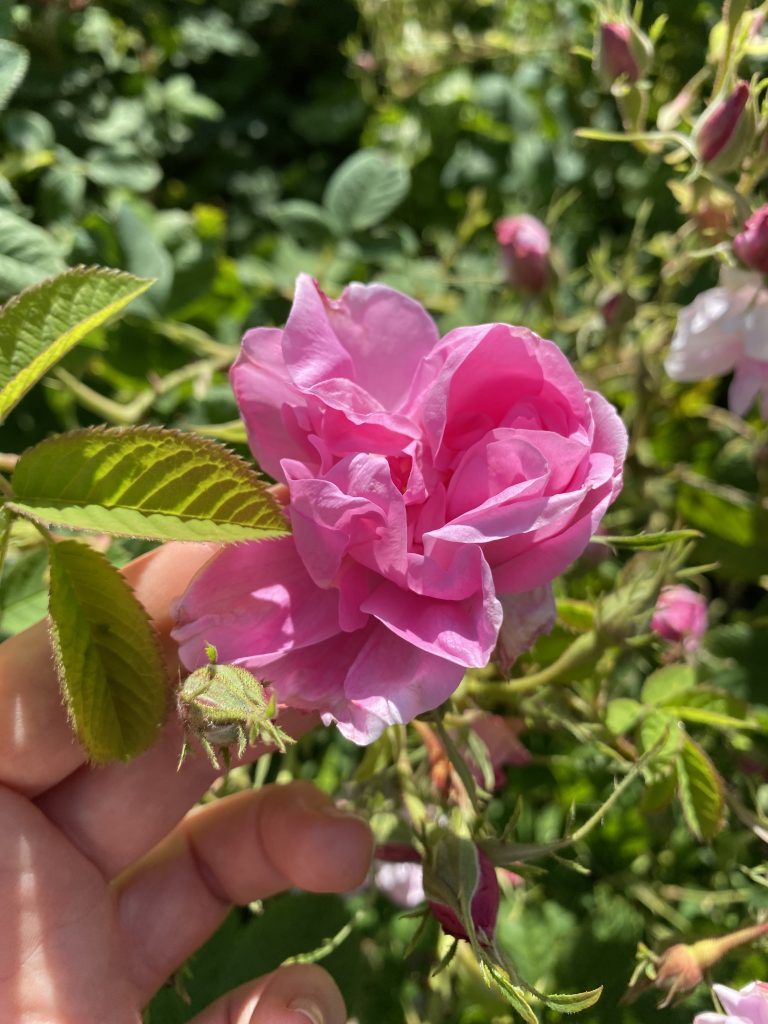
A close up of the Kazanlik rose.
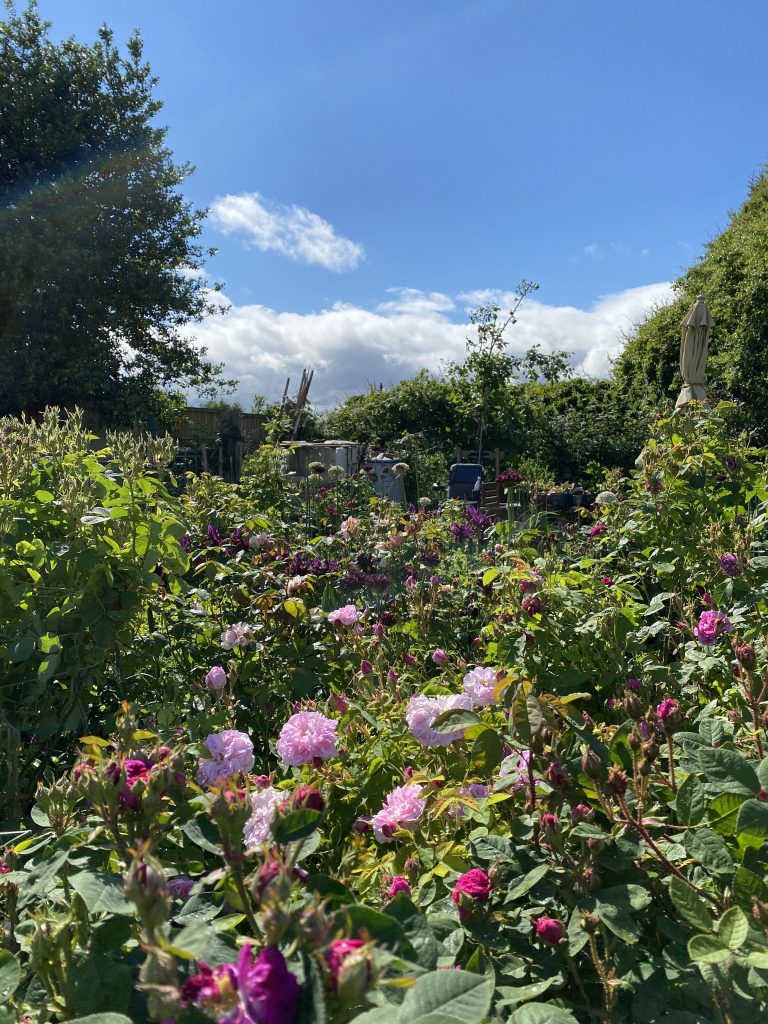
A close up of the garden showing it as a sea of colour, shape and texture. Seeing it emerge into this current phase of the design is truly thrilling to me, after it living inside my head as an imagined place for years now.